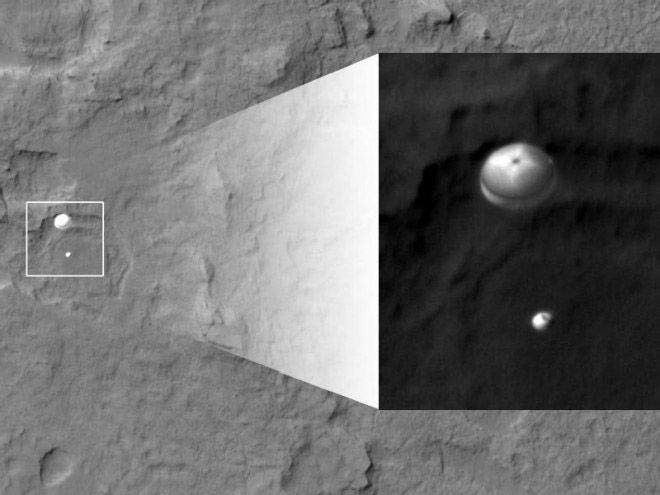Please note: Osher Rainforest will be closed for maintenance Jan. 14–16.
Science News
Curiosity Success!
August 6, 2012
by Alyssa Keimach

Everything went according to plan! The revolutionary landing sequence dubbed the Seven Minutes of Terror successfully landed Curiosity on Mars at 10:32 pm Pacific time.
Upon confirmation of Curiosity’s arrival, the Jet Propulsion Laboratory in Pasadena erupted with excitement. “The Seven Minutes of Terror has turned into the Seven Minutes of Triumph,” said NASA Associate Administrator for Science John Grunsfeld.
Curiosity left Earth on November 26, 2011, to complete its eight and a half month journey to Mars. This trip was unlike previous missions with Spirit or Opportunity: Curiosity weighs five times more than its predecessors!
With this extra weight comes extra technology. Originally called the Mars Science Laboratory (MSL), the machinery onboard transforms the rover into a hub of various experiments.
Curiosity landed in Gale crater, a 96-mile (154 kilometer) area selected for its proximity to what may have been an oceanic boundary. The center of the crater features Mount Sharp, a large mound of sedimentary layers that may well hold clues to a time when life on Mars could have existed.
For the landing sequence to occur properly, everything had to go exactly right. And it did! All 76 pyrotechnic devices worked seamlessly, Curiosity dropped 150 kilograms of tungsten, the huge parachute packed years before deployed correctly, and the sky-crane lowered Curiosity gently to the crater’s surface. The net result? Curiosity slowed from 21,000 kilometers per hour to a standstill during the short landing period.
Curiosity landed just two kilometers northeast of its target, a position well within the estimated landing region. Curiosity then sent a self-portrait of its wheel back to Earth, followed by a picture of its own shadow on the Martian surface. The mission control center erupted with enthusiasm after each new piece of information.
Curiosity even tweeted, “I’m safely on the surface of Mars. GALE CRATER I AM IN YOU!!! #MSL”
On the way toward Mars, the image above was snapped. This one by a Mars orbiter called HiRISE. The image of Curiosity’s descent is magnificent from above; the orbiter was in the perfect location.
Next up? Curiosity will deploy its high-gain antenna to have more ways of communicating with Earth. And in a few days, the rover gets a software update to ready it for its ground mission: it no longer needs the software it required for “EDL” (entry, descent, and landing), so the new software will allow it to focus on the tasks ahead…
Curiosity will spend the next two years looking for carbon-based molecules that may have sustained life on Mars. Throughout the mission, pictures will be posted here.
Alyssa Keimach is an astronomy and astrophysics student at the University of Michigan and volunteers for the Morrison Planetarium.